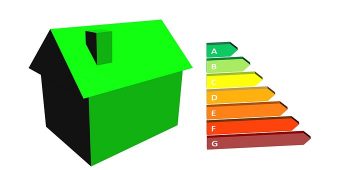
A recent report card of state energy efficiency policies and programs shows that even in this era of partisan divide, blue and red states alike are embracing smarter energy use as a key strategy for reducing harmful pollution, saving consumers money, creating jobs and driving economic growth.
The annual ranking of states by the American Council for an Energy-Efficient Economy (ACEEE) highlights how many states are stepping up efficiency efforts despite the lack of federal leadership. Utilities nationwide spent more than $7 billion on energy efficiency programs in 2016, saving more than 25 thousand gigawatt-hours of electricity. How much is that? It’s enough to power almost 3 million homes and avoid the equivalent amount of emissions spewed from nearly 4 million cars over one year.
This year the scorecard also looks at how well states provide access to programs for low-income customers, who spend a disproportionate amount of their income on energy bills. This will raise the bar of expectations for all states to ensure these customers also share in the benefits of energy efficiency.
In the 2017 State Energy Efficiency Scorecard, we see the usual suspects in the “top five” ranking (Massachusetts, California, Rhode Island, Vermont and Oregon). We also see great improvements in states we wouldn’t necessarily expect (Idaho, Florida and Virginia).
Furthermore, in contrast to states who rolled back efficiency policies (Indiana and Minnesota), others renewed their commitment to help lay the groundwork for future savings (Colorado, Illinois, Michigan, Nevada and Ohio). This just goes to show that more states are finding efficiency a critical way to cut energy waste, save customers money and reduce pollution.
However, some states are not living up to their potential or even meeting their past efforts, such as New York State. The good news? Given Gov. Cuomo’s leadership and commitment to tackling climate change and scaling up clean energy, New York could regain its ranking as a national leader on energy efficiency if it takes the right steps to shore up the state’s energy efficiency framework in the coming months.
The Scorecard also highlights how states—even leaders—can do more:
Set up an energy efficiency resource standard and provide sufficient funding to implement it. Such standards, currently on the books in 26 states, require utilities to save energy through efficiency. States with an EERS have shown average energy efficiency spending and savings levels more than three times as high as those in states without an EERS, according to ACEEE.
Promote expanded low-income efficiency programs. Low-income customers pay up to three times as much as the average household for home energy costs and can save money and improve health with energy efficiency programs. Illinois last year required Commonwealth Edison and Ameren Illinois to invest $25 million and $8.35 million per year on programs to increase the efficiency of low-income households. Nevada earlier this year passed legislation requiring big utilities to set aside 5 percent of their budgets for programs that reduce energy costs for low-income households.
Strengthen building codes and improve compliance. Codes help make sure that efficient choices are made from the start so new homes and buildings save customers money on energy bills and cut dangerous climate pollution.
Adopt California tailpipe emission standards and set targets for reducing vehicle miles traveled. Improving overall transportation greenhouse gas reduction performance at the state and metro level is critical to substantially cut emissions and is an action that has gained urgency amid a threatened rollback of federal clean car and fuel economy standards.
Treat qualifying Combined Heat and Power (CHP) efforts on par with other efficiency savings. CHP systems can help improve the efficiency of manufacturing facilities, buildings, and homes; save consumers money on their energy bills; drive business competitiveness, economic growth, and jobs; enhance grid reliability and flexibility; and help protect public health and the environment.
Step up state-led efforts to promote energy efficiency, including investing in research and development of energy efficiency technology and ‘leading by example’ by reducing energy use in public buildings and fleets.
Promote innovative financing opportunities to take advantage of private capital and lower costs of implementing efficiency.
State efforts have gained urgency as President Trump recklessly shrugs off the dangers of climate change and moves to cut back popular—and successful—federal energy efficiency programs. What can you do? In addition to supporting those who focus their work on reducing the impact of climate change, this Thursday is the second annual Energy Efficiency Day where every one of us can take actions to make a difference.
Source: ecowatch.com



